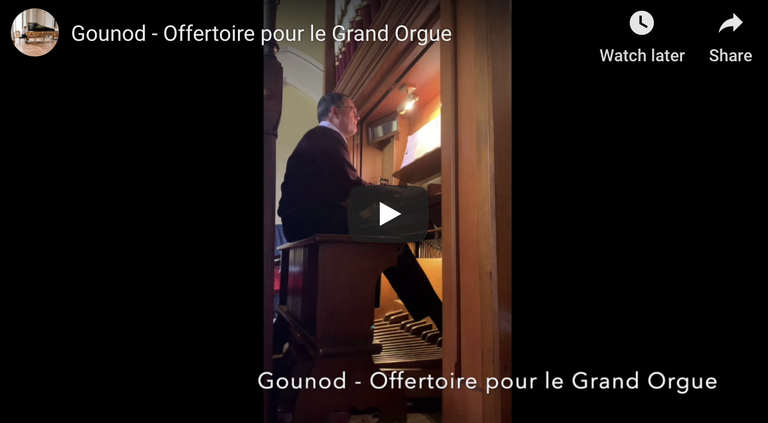Offertoire pour le Grand Orgue by Charles Gounod | Secrets of Organ Playing Contest Week 41
Charles Gounod (1818 – 1893) was an organist and a prolific composer who wrote a variety of genres. This Offertoire is a posthumous work and was intended to be played at the offertory time of the Mass. This work is ternary form piece in C Major with a central section in G Major. The texture is very legato and typical of the French Romantic organ school. In the French churches it was usual to have two organs: a large west end organ – the Grand Orgue and a smaller one in the chancel, the Orgue de CHœur. The Grand ORgue plahed the impressive solos throughout the Mass: the Entré, Offertoire, Elévation, Communion and Sortie. The role of the orgue de chœur was to accompany the chant. On occasions, the two organs would dialogue as if they were antiphonal choirs.
The organ I am playing upon was built by the Australian organ builder, Charles Richardson in 1912. Its specification with an abundance of unison registers is ideal for this music. The swell pedal is an old fashioned level swell which is hitched down at the right, not unlike what was found on 19th century French organs. Its placement to the far right allowed the left foot to play higher on the pedal board. It was not unusual for the left foot alone to play the pedal line while the right foot was controlling the sell lever.

@tipu curate
Upvoted 👌
$trdo
Congratulations @contrabourdon, you are successfuly trended the post that shared by @tormus1958!
@tormus1958 will receive 0.21574800 TRDO & @contrabourdon will get 0.14383200 TRDO curation in 3 Days from Post Created Date!
"Call TRDO, Your Comment Worth Something!"
To view or trade TRDO go to steem-engine.com
Join TRDO Discord Channel or Join TRDO Web Site
!organduo 500
@tormus1958 you have received

500 ORGANDUOfrom organduo!Trade the tokens on Steem Engine or send them to @organduo.voter with post in memo for an upvote!
This tip bot is powered by witness untersatz!
Congratulations @tormus1958, your post successfully recieved 0.215748 TRDO from below listed TRENDO callers:
To view or trade TRDO go to steem-engine.com
Join TRDO Discord Channel or Join TRDO Web Site
Thanks!